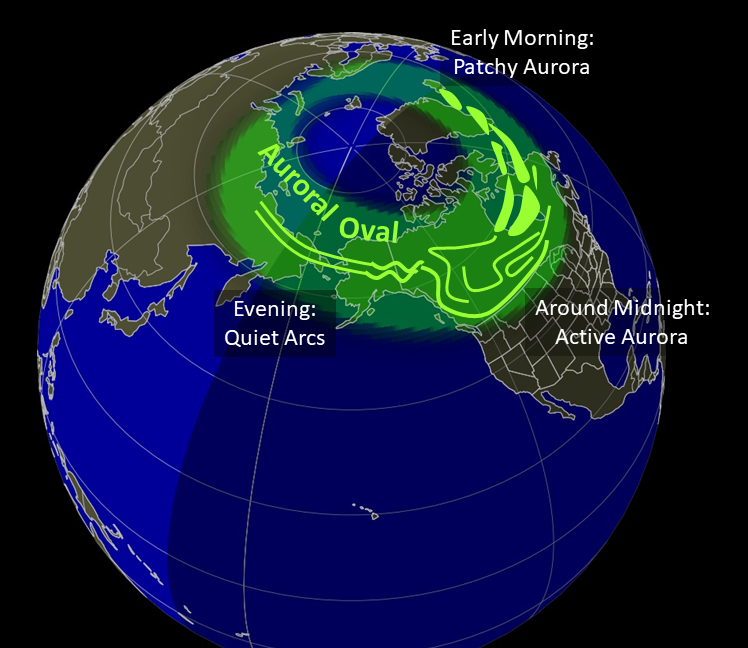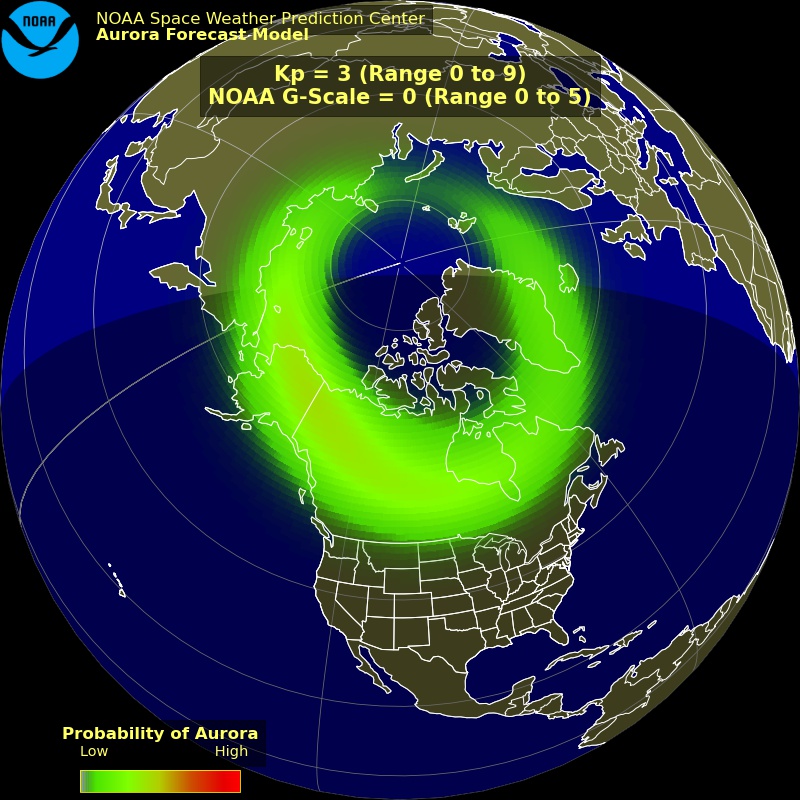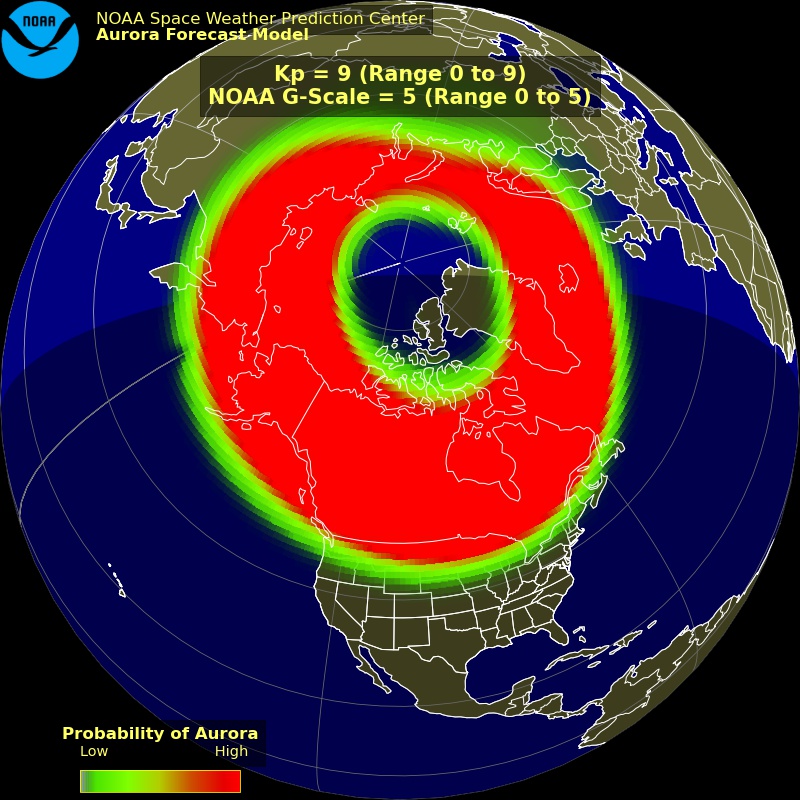Aurora Chasing Made Easy: Your Ultimate Guide To NOAA Aurora Prediction
Imagine this: you're bundled up in a cozy parka, standing under a vast, dark sky, waiting for nature's most dazzling light show to unfold. The NOAA aurora prediction is your secret weapon to make sure you're in the right place at the right time when the auroras decide to dance. So, buckle up, because we’re diving deep into everything you need to know about predicting auroras and making the most of your aurora hunt.
There’s nothing quite like the aurora borealis or aurora australis. These celestial light shows have fascinated humans for centuries. But catching them isn’t just about hoping for the best. With tools like NOAA aurora prediction, you can increase your chances of witnessing this magical phenomenon exponentially. Whether you’re a seasoned aurora chaser or a newbie eager to see the lights, this guide will help you plan your adventure.
Now, before we get into the nitty-gritty, let’s address the elephant in the room. Aurora prediction isn’t always foolproof. Space weather can be unpredictable, but with the right resources, you can stack the odds in your favor. And that’s where NOAA comes in. Let’s break it all down, step by step, so you’re fully prepared for your next aurora expedition.
Read also:Why The Lidl Beauty Box Online Is Your Secret Weapon For Affordable Glamour
What is NOAA Aurora Prediction All About?
Let’s start with the basics. NOAA, or the National Oceanic and Atmospheric Administration, is like the weatherman of space. They don’t just track storms here on Earth; they also monitor solar storms and geomagnetic activity that can lead to auroras. Their aurora prediction tools give you a heads-up on when and where these cosmic light shows might happen.
Here’s the deal: auroras occur when charged particles from the sun collide with Earth’s atmosphere. NOAA uses satellites and ground-based sensors to track these particles and predict where they might interact with our atmosphere. It’s like having a front-row seat to the solar system’s biggest light show, and NOAA is your VIP ticket.
Why Should You Care About Aurora Prediction?
If you’ve ever stood outside on a cold night, hoping to see the auroras but coming up empty-handed, you know how frustrating it can be. That’s why aurora prediction matters. It’s not just about crossing a bucket list item off your list; it’s about making the most of your time and resources. With NOAA’s predictions, you can plan your trip down to the minute, ensuring you’re in the right spot when the lights appear.
Here’s a quick rundown of why NOAA aurora prediction is a game-changer:
- It helps you avoid wasted trips to remote locations.
- It gives you real-time updates on auroral activity.
- It allows you to adjust your plans based on current conditions.
How Does NOAA Predict Auroras?
NOAA’s aurora prediction system is a bit like a high-tech crystal ball, but with a lot more science behind it. They use a combination of satellite data, ground-based sensors, and computer models to forecast auroral activity. Here’s how it works:
Satellites like the Deep Space Climate Observatory (DSCOVR) and the Advanced Composition Explorer (ACE) monitor the sun and its activity. When a solar storm is detected, NOAA analyzes the data to determine if it will affect Earth’s magnetic field. If it does, they issue an alert, letting aurora enthusiasts know when and where they might see the lights.
Read also:British Airways Flight Nowhere The Experience That Takes You Everywhere
Key Components of NOAA’s Aurora Prediction
There are a few key components to NOAA’s aurora prediction system:
- Space Weather Alerts: These alerts let you know when a geomagnetic storm is approaching.
- Auroral Oval Maps: These maps show where auroras are most likely to occur at any given time.
- Kp Index: This index measures geomagnetic activity on a scale of 0 to 9. The higher the Kp value, the better your chances of seeing auroras.
Understanding the Kp Index for Aurora Prediction
The Kp index is like the scorecard for aurora hunters. It tells you how strong the geomagnetic activity is and how far south the auroras might be visible. Here’s a quick guide to interpreting the Kp index:
A Kp value of 5 or higher means there’s a good chance of seeing auroras in higher-latitude regions like Alaska, Canada, and Scandinavia. If the Kp value reaches 7 or 8, auroras might be visible as far south as the northern United States. And if you hit a Kp 9, well, that’s like hitting the aurora jackpot.
Why the Kp Index Matters for Your Aurora Hunt
Think of the Kp index as your guide to planning your aurora trip. If you’re in a lower-latitude region, you’ll need a higher Kp value to see the lights. But if you’re already in a prime aurora-viewing location, even a moderate Kp value can give you a spectacular show.
Here’s a pro tip: don’t just rely on the Kp index. Combine it with NOAA’s auroral oval maps for the best results. That way, you’ll know exactly where to go and when to look up.
NOAA Aurora Prediction Tools You Need to Know
NOAA offers a variety of tools to help you predict auroras. Here are some of the most useful ones:
Space Weather Prediction Center (SWPC): This is NOAA’s main hub for space weather information. It provides real-time updates on solar activity, geomagnetic storms, and auroral activity.
Aurora Now: This tool gives you a quick snapshot of current auroral activity. It’s perfect for last-minute planning or if you’re already in the field.
3-Day Aurora Forecast: If you’re planning a trip in advance, this tool is your best friend. It gives you a forecast for the next three days, so you can time your visit perfectly.
How to Use NOAA’s Tools Effectively
Using NOAA’s tools effectively requires a bit of practice, but once you get the hang of it, you’ll be an aurora prediction pro. Here’s how to make the most of these resources:
- Check the Kp index regularly to stay updated on geomagnetic activity.
- Use the auroral oval maps to pinpoint the best viewing locations.
- Sign up for space weather alerts so you’re notified when conditions are favorable.
Where to See Auroras Using NOAA Predictions
Now that you know how NOAA predicts auroras, let’s talk about where to go to see them. The best aurora-viewing locations are typically in higher-latitude regions, but with the right conditions, you might be able to spot them farther south.
Here are some of the top aurora-viewing destinations:
- Alaska: Fairbanks is often called the aurora capital of the world.
- Canada: The Yukon, Northwest Territories, and Nunavut offer stunning views.
- Scandinavia: Norway, Sweden, and Finland are famous for their aurora displays.
- Iceland: This island nation offers easy access to prime viewing spots.
Tips for Choosing the Best Viewing Spot
When choosing a viewing spot, consider the following factors:
- Darkness: The darker the sky, the better your chances of seeing auroras.
- Weather: Clear skies are essential for optimal viewing.
- Location: Being in a high-latitude region increases your chances of success.
How to Plan Your Aurora Hunt with NOAA Predictions
Planning an aurora hunt might seem overwhelming, but with NOAA’s predictions, it’s easier than you think. Here’s a step-by-step guide to help you plan your trip:
Step 1: Check the 3-day aurora forecast to find the best time to visit.
Step 2: Use the auroral oval maps to determine the best viewing locations.
Step 3: Monitor the Kp index in real-time for updates on auroral activity.
Step 4: Pack your gear and head out when conditions are favorable.
Essential Gear for Aurora Chasing
Before you head out on your aurora hunt, make sure you have the right gear. Here’s what you’ll need:
- Warm Clothing: Auroras are often visible in cold climates, so dress warmly.
- Camera Equipment: A good camera and tripod are essential for capturing the lights.
- Headlamp: A hands-free light source is useful for setting up your gear.
Common Mistakes to Avoid When Using NOAA Aurora Prediction
Even with the best tools, aurora hunting can be tricky. Here are some common mistakes to avoid:
Mistake #1: Relying solely on the Kp index. Always combine it with auroral oval maps for the best results.
Mistake #2: Ignoring weather conditions. Clear skies are crucial for optimal viewing.
Mistake #3: Not checking updates regularly. Conditions can change quickly, so stay informed.
How to Avoid These Mistakes
Here’s how to avoid these common pitfalls:
- Use multiple tools and resources to get a complete picture of auroral activity.
- Check weather forecasts in addition to space weather alerts.
- Stay flexible and be prepared to adjust your plans if conditions change.
The Science Behind Aurora Prediction
Understanding the science behind aurora prediction can help you appreciate the complexity of the process. Auroras are caused by charged particles from the sun interacting with Earth’s magnetic field. These particles excite atoms and molecules in the atmosphere, causing them to emit light in the form of auroras.
NOAA’s prediction models take into account a variety of factors, including solar wind speed, magnetic field orientation, and particle density. By analyzing these factors, they can predict when and where auroras are most likely to occur.
Why NOAA’s Predictions Are So Accurate
NOAA’s predictions are so accurate because they rely on a combination of cutting-edge technology and decades of research. Their satellites provide real-time data on solar activity, while their computer models simulate how that activity will affect Earth’s magnetic field. It’s a sophisticated system that continues to improve as technology advances.
Conclusion: Your Aurora Adventure Awaits
So, there you have it—your ultimate guide to NOAA aurora prediction. With the right tools and a bit of planning, you can increase your chances of witnessing one of nature’s most incredible phenomena. Remember to check the Kp index, use auroral oval maps, and stay flexible in case conditions change.
Now it’s your turn. Are you ready to chase the auroras? Leave a comment below and let me know where your dream aurora-viewing destination is. And don’t forget to share this article with your fellow aurora enthusiasts. Together, we can make the most of NOAA’s predictions and witness the magic of the auroras firsthand.
Table of Contents
- What is NOAA Aurora Prediction All About?
- Why Should You Care About Aurora Prediction?
- How Does NOAA Predict Auroras?
- Understanding the Kp Index for Aurora Prediction
- NOAA Aurora Prediction Tools You Need to Know
- Where to See Auroras Using NOAA Predictions
- How to Plan Your Aurora Hunt with NOAA Predictions
- Common Mistakes to Avoid When Using NOAA Aurora Prediction
- The Science Behind Aurora Prediction
- Conclusion: Your Aurora Adventure Awaits


